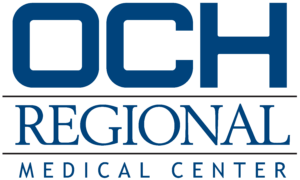Alex Daly, 20, is a junior at Mississippi State University studying software engineering. He does all the typical things that college students do, including playing video games and the guitar, but maybe a little differently. Alex was born with a congenital absence of his left arm below the elbow. While he’s had various prosthetic arms throughout his life, they’ve all “hindered more than they helped” according to Alex; however, that all changed when he learned about the newest type of prosthesis on the market and got connected with OCH Rehab Services Occupational Therapist Jamie Yates.
In May, Daly received his new myoelectric prosthesis with Coapt pattern recognition technology and the i-limb quantum by Ossur. The i-limb hand is currently the most versatile prosthetic hand on the global market, with individually motorized digits and technology that allows users to choose from a wide selection of automated grips and gestures to help complete their activities of daily living.
With Daly living in Starkville, Ossur contacted Yates to invite her to Columbus, Ohio to participate in an intense two-day training course to teach her how to help patients learn to use myoelectric limbs, but more specifically, how to help Daly.
“I was excited about the opportunity to learn more about this brand new technology and how to help Alex optimize the use of the prosthesis,” said Yates. “Someone with a lower extremity absence is much more motivated to learn how to use prosthetics to be able to walk; whereas people like Alex with an upper extremity absence have learned how to do things differently instead of using a prosthesis,” she explained.
“I have to rethink how I do things,” said Daly. “Going from doing everything with my right arm to now using both arms has been a new way of thinking for me. I learned how to do everything with my right hand, so it’s been an adventure. It’s fun, but it’s a challenge.”
Yates is now the only occupational therapist in the state trained to educate patients on how to use a myoelectric prosthesis. Originally from Pennsylvania, Daly admits he was pleasantly surprised when he learned there was a therapist in Starkville who could provide the services he needed. “I was prepared to have to travel outside of Starkville for this treatment, but it has worked out really well with Jamie being here in Starkville. OCH has fantastic rehab services, and Jamie and the staff have been super helpful,” said Daly.
Yates noted that physicians are now recognizing that a patient’s success with a new prosthesis is linked to at least 20-30 hours of occupational therapy. Daly’s weekly therapy includes re-learning activities of daily living with the prosthesis such as making a sandwich or tying his shoes, as well as performing exercises to strengthen the muscles that carry the weight of the prosthesis.
“Alex has never really used his left arm as much as the right, and now with the weight of the unit on his left arm, he is more at risk for shoulder impingement or arthritis. To prevent damage to the muscles and joints in his arm, we work on exercises to strengthen those muscles,” she explained.
“Jamie keeps me focused on a lot of stuff I would have never even thought about like helping me strengthen my rotator cuff. I knew I would have to do some of that but not to the extent that Jamie has gotten me to,” said Daly.
The prosthesis has 17 connection points embedded in the sleeve or arm portion of his prosthesis that lie directly over the end of his arm and are continuously detecting the contracting and relaxing of his muscles using the Coapt pattern technology. Each specific signal from a particular muscle or group of muscles can be programmed to elicit one of the many desired grips.
“There are so many grasps we use to function throughout the day that we don’t even think about, such as picking up a drink, writing with a pen or holding a phone. With a muscle powered unit, the user can obtain these hands movements in much the same manner,” Yates explained.
And if Daly needs a specific grip—there’s an app for that! Together, Yates and Daly have programmed commands into the myoelectric prosthesis that Daly accesses through an app on his phone. One command in particular allows him to hold a guitar pick so that his right hand is able to play the chords while he strums with his left hand. Daly describes playing the guitar as a “creative outlet” that he discovered around the same time he learned to accept himself and what makes him unique.
“There was a time that I went through an identity crisis and struggled a bit, but now, I’m able to be positive because of the support of my family and friends,” said Daly.
Now after working with Yates for six months, Daly includes her in the support circle and said, “Jamie encourages me to actively use the prosthetic and whenever there’s a problem, she’s really good to think about how to approach the situation to problem solve.”
Daly said if there’s anything he wants people to take away from his story, it’s everyone has an advocate.
“There are people who are willing to help whatever obstacle you’re facing. It doesn’t matter what that obstacle may be. There are people there to help.”
For more information about OCH Rehab Services, visit the webpage or call 662-615-3030.
